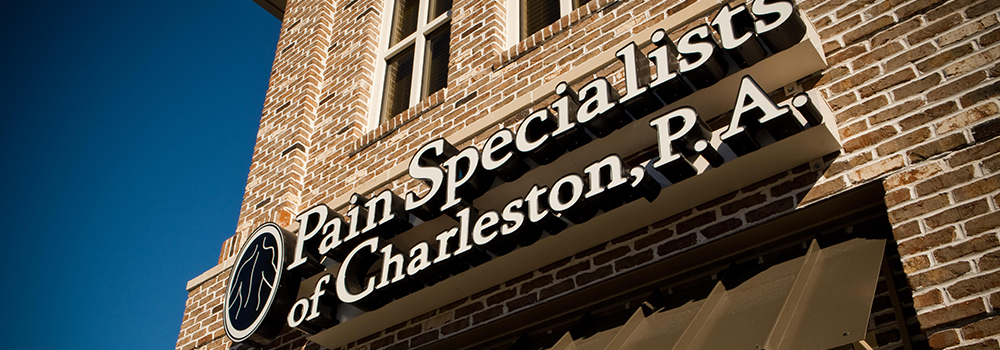
Sometimes, walking down the yellow brick road of life is not as cheerful and easy as we would like it to be. As much as we would like to imagine ourselves moving with the ease and flexibility of the scarecrow, one wrong bend or lift can have us aching and stuck like the Tin Man.
While we are neither made of tin nor hay, we need to keep our bodies moving like well-oiled machines – and that starts with proper body mechanics.
Body mechanics describes the different ways we move as we go about our daily lives. This can include how we sleep, sit, stand, bend, or carry objects. One wrong motion to pick up a 12-pack of soda may be detrimental, leaving you with pain instead of a refreshing beverage.
Follow along as we explore proper body mechanics and how to keep you moving safely down the yellow brick road of a pain-free life!
What is Body Mechanics?
Body mechanics is a term used to describe the ways we move as we go about our daily routines. It includes how we hold and move our bodies when we sit, stand, lift, carry, bend, and even sleep.
While sudden injuries or a car accident can be to blame for your neck and back problems, many back injuries build over time as a result of improper body mechanics.
When we fail to move correctly and safely, the spine is subjected to abnormal stress that it cannot withstand over time without falling prey to injury. Disc and joint degeneration, spinal cord injury, and unnecessary wear and tear can lead to severe complications – and a possible visit to a pain management physician.
The 4 Components of Body Mechanics
Incorporating proper body mechanics into our daily lives is easier than it may appear – but it helps to have a place to start. The four main components, or principles of proper body mechanics, include posture, base of support, muscle groups, and lifting technique.
Posture
Good body mechanics start with posture, which refers to the alignment of your spine while sitting, standing, or sleeping. The ideal posture for your vertebrae is in a neutral position, meaning that you are not too rounded forward or arched back too far to add undue stress to your spine.
But what does good posture look like? Here are a few steps to try at home to get your spine into alignment and maintain proper posture!
- Stand with your feet apart
- Tuck your tailbone in and tilt your pelvic bone slightly forward to create a small hollow in the lower back
- Pull the shoulders back and lift your chest
- Lift your chin until it is level and relax your jaw and mouth
And there you have it! While this may feel slightly uncomfortable and awkward at first, keep practicing until it becomes second nature. Your spine will thank you!
The Base of Support and Your Center of Gravity
A house is only as good as its foundation, and the same can be said for your posture when you’re pushing, pulling, or lifting objects.
Improving your balance and reducing the risk of injury all comes down to the legs and feet. To widen your base of support and lessen the risk of injury, follow these tips:
- Place your feet shoulder-width apart
- Place one foot slightly in front of the other to improve balance
- Keep your body centered over your feet to evenly distribute weight in your base of support
- When carrying objects, keep the object close to your body to keep your center of gravity aligned with the object itself
Muscle Groups
The mindset that goes into many tasks is the common phrase: “Work smarter, not harder.” Why push a heavy crate with one finger when you can use your arms? In order to reduce the risk of injury, it becomes crucial to use larger muscle groups, such as those in your arms, legs, and torso.
For example, when picking a box up from the floor, you don’t want to bend over and use your arms to lift the box. While your arms are a larger muscle group, this puts unnecessary strain on your lower back. In this case, your legs can take the brunt of the work by squatting down and using your legs to bring you and the object upright.
Lifting Technique
Unfortunately, sometimes we can’t avoid the need to lift objects from one space to another. Whether you work in construction or as a stay-at-home parent, the need to lift is vital to our everyday lives. The process of lifting places the greatest strain on the lower back and presents the highest risk of injury.
In lifting, it’s important to remember that it doesn’t matter what an object weighs but rather how you lift it.
Here is the process for how to lift heavy objects–without causing an injury!
- Keep your back in a neutral position
- Bend the knees to a full squat or lunge position
- Bring the object towards your chest before standing
- Tighten the lumbar and buttocks muscles, while drawing in your abdominal muscles
- Lift from the legs into a standing position
Be mindful not to lift from a twisted or imbalanced position, as this can put unnecessary stress on your back and cause a severe injury!
If you find that your back is in increased pain after lifting an object, visit a pain management clinic near you immediately. Improper technique may have caused a herniated disc, muscle strain, or other spinal cord injury.
Your Quick Guide to Proper Body Mechanics – From Sleeping Positions to Everyday Chores!
Whether you are getting dressed for the day or getting ready for a good night’s sleep, the opportunity to use proper body mechanics is all around us.
Here is your quick guide to everyday activities using proper body mechanics!
Sleeping Positions
When sleeping on your back, place a pillow under the head and knees for optimal support. If you are an avid side sleeper, place a pillow between the knees to keep the spine properly aligned and comfortable throughout the night.
Brushing Teeth
When brushing our teeth, it can be easy to hunch over the sink. To help maintain a balanced and stress-free posture, place one foot on the ledge of a cabinet and one hand on the counter. Bend your knees slightly to keep your back straight.
Laundry
Whether you are a family of five or live on your own, laundry tends to pile up in your basket. When picking up your laundry basket, squat down in front of the basket and pull it close to your torso. Use your leg muscles to lift, keeping your back straight in the process.
Sitting
Working at your desk can sometimes leave you slightly hunched over your computer. To maintain proper posture while sitting, follow these steps:
- Place your buttocks at the back of the seat, leaving a small space between the back of your knees and the chair
- Place your feet flat on the floor, avoiding crossing your legs for extended periods of time
- Pull your shoulders back and lift your chest
- Optional: place a lumbar roll or even a rolled-up towel behind your lower back for extra lumbar support if you tend to sit for prolonged periods
Improper Technique Add Insult to Injury? Pain Specialists of Charleston is Here to Help

As creatures of habit, it can be simple for us to forget about body mechanics and shift into positions that are “relaxing” or comfortable. While it may feel comfy in the moment, it may lead to injuries and problems for our bodies later.
Practicing the proper body mechanics can help remove insult from injury, keeping our bodies agile and feeling good for years to come!
Here are a few key takeaways of proper body mechanics to keep in mind:
- Your body is like a machine – proper body mechanics utilizes the body’s strength to its best mechanical advantage to complete a task efficiently without causing injury
- A task does not have to be complicated or involve a “heavy” object to put us at risk for injury
- Incorporating proper body mechanics into your daily routine is not as complicated as you may believe. Making a few key adjustments to your movements will keep your spine healthy and strong for years to come.
If you find yourself in pain from improper body mechanics or suffered an injury with no concrete cause, our team is here to help. We make it our mission to meet your needs for pain management in Charleston, SC, and help you find relief – without the need for surgery or habit-forming medications.
Schedule an appointment with us to reclaim your quality of life and get back to the activities you love most!
Request Appointment | Contact Us | Meet Pain Doctors | Visit Us
Additional Helpful Articles:
What Should I Expect During My First Pain Management Appointment?
Interventional Pain Management: Everything You Need to Know
What Does a Pain Management Physician Do?
What’s the Best Leg Pain Treatment Without Surgery?
Why Do Side Sleepers Wake Up to Shoulder Pains?
What are the Reasons for Random Pains in My Buttocks?
Charley Horses: Understanding the Pesky Midnight Muscle Spasms
Can’t Sit or Stand Without Pain? Gluteal Tendinopathy May Be to Blame
How Can I Get Immediate Relief for Sciatic Pain?
Can Ozempic Cause Muscle Pain?
Get to Know Pain Management Physicians:
Our Services:
Diagnosis | Treatment | Interventional Pain Management | TRICARE | Wellness | Clinical Trials | Worker’s Compensation | Neurology | Imaging/ MRI
Published October 2024
